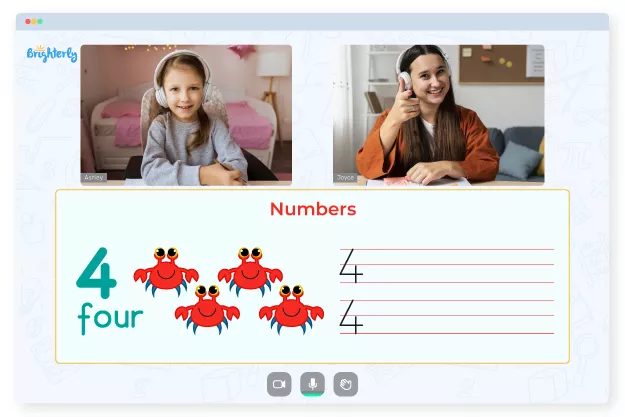Compatible Numbers
Created on Dec 15, 2023
Updated on January 6, 2024
Hello, Brighterly explorers! Welcome back to another exciting adventure in the realm of numbers. Today, we’re going to unravel the mystery of compatible numbers – your new superpower for doing math faster and more efficiently.
Here at Brighterly, we believe that learning math should be as enjoyable as a game. And what’s a better game than playing with numbers, seeing how they relate, how they combine and separate? Compatible numbers are like the secret cheat codes in this game. They’re easy to work with and can make difficult math problems feel like a breeze. So, strap in and let’s take off into the world of compatible numbers!
What is Number Sense?
What is number sense? In the Brighterly universe, we like to think of it as the ‘intuition’ of mathematics. It’s your innate understanding of numbers, their values, their relationships, and how they dance together through different operations like addition, subtraction, multiplication, and division.
Just like how you don’t need to decode every single letter to read a word in a book, a strong number sense allows you to grasp mathematical concepts fluidly, without the need to dissect every single digit. It is the foundation that helps you estimate results, solve problems efficiently, and apply math to everyday situations. Imagine being able to predict the plot twist in a story – that’s what number sense is like in the world of math!
What Are Compatible Numbers?
So, what are these mysterious compatible numbers? Simply put, they are your best friends when it comes to mental calculations. Compatible numbers are easy to manipulate in your head, making those seemingly tricky math problems a whole lot easier.
Think of these numbers as the ’round’, ‘friendly’ numbers that you find easy to work with. They typically end in zero or five or are powers of 2. Numbers like 10, 20, 25, 50, 100, and so forth, are great examples. Remember playing with toy blocks? Compatible numbers are like the blocks that fit together perfectly, making your math-building process smooth and fun!
Compatible Numbers in Addition
Where do we use these handy compatible numbers in math? The answer is – just about everywhere! Whether you’re adding, subtracting, multiplying, or dividing, these numbers can simplify calculations and help you reach the answer more efficiently. Let’s explore how they work in different operations.
In addition, we often group numbers that are easy to add together. For example, when adding 27, 33, and 40, you could first add 30 and 40 to get 70, then add 27 and 3 to get 30, and combine these results to get 100. Simple, right?
In subtraction, compatible numbers help us adjust numbers to make the computation easier. Say you’re subtracting 32 from 78, it’s simpler to first subtract 30 to get 48, then subtract the remaining 2 to end up with 46.
When it comes to multiplication, we often round off numbers to the nearest ten or five. If you’re multiplying 49 by 5, rounding 49 to 50 simplifies the calculation: 50 * 5 equals 250. It’s like taking a shortcut through your multiplication journey!
And in division, compatible numbers help us estimate the quotient. When dividing 1200 by 25, it’s easier to think of 1200 divided by 20, which gives 60 – a number close enough to the actual answer of 48 to be useful in many situations.
Compatible Numbers in Subtraction
Compatible numbers are also incredibly useful when it comes to estimation. Whether you’re trying to quickly calculate the total cost of your shopping, measure ingredients while cooking, or any situation where you need a good approximation, rounding numbers to their nearest ten or hundred can be a great strategy.
Compatible Numbers vs Rounding: The Difference
Now, you might be wondering – aren’t compatible numbers and rounding the same thing? While both methods aim to simplify calculations, there’s a key difference. Compatible numbers are chosen based on their ease of use in mental calculations. It’s like picking the smoothest, straightest road to drive on. On the other hand, rounding follows specific rules to approximate numbers to a certain place value. It’s like taking a detour to reach a specific destination.
Rounding involves making numbers more manageable by adjusting them to a desired level of precision. For example, if you have a number like 47, you can round it to 50 for a rough estimate. Rounding has its own set of rules, such as determining whether to round up or down based on the digit that follows.
Compatible numbers, on the other hand, are chosen based on their compatibility with mental calculations. They are the numbers that naturally fit together and make arithmetic operations simpler. You can think of them as the secret shortcuts in math that make your calculations smoother and faster.
Unleash the Power of Compatible Numbers!
In conclusion, compatible numbers are like magical tools in your mathematical arsenal. They are the Swiss Army knives that make mental math a breeze. By understanding and using compatible numbers, you can speed up your calculations, build a stronger number sense, and gain a deeper understanding of the relationships between numbers.
So, Brighterly learners, embrace the power of compatible numbers! Use them to your advantage in addition, subtraction, multiplication, and division. Let them guide you in estimating and making quick calculations in real-life situations. Remember, math is not just about following rules, but about exploring, discovering, and finding the most efficient ways to solve problems.
Continue your journey of mathematical exploration, and let compatible numbers be your trusted companions along the way. With their help, you’ll navigate the mathematical universe with confidence, speed, and a brighter understanding!
Solved Examples on Compatible Numbers
Let’s take a look at how compatible numbers can simplify math problems:
- Addition: 45 + 25 + 30 = 50 + 20 + 30 = 100
- Subtraction: 70 – 18 = 70 – 20 + 2 = 52
- Multiplication: 18 * 5 = 20 * 5 – 2 * 5 = 90
- Division: 420 ÷ 25 ≈ 420 ÷ 20 = 21
Practice Problems on Compatible Numbers
- What are the compatible numbers in 350 + 150 + 25?
- Subtract 42 from 89 using compatible numbers.
- Simplify 49 * 6 using compatible numbers.
- Divide 1080 by 45 using compatible numbers
Conclusion
And there you have it, Brighterly explorers, your journey into the realm of compatible numbers. Isn’t it amazing how these simple number ‘tricks’ can make calculations so much easier and quicker?
Compatible numbers, as we’ve discovered, are not just about making math easier. They’re a crucial part of building a robust number sense, a fundamental skill in mathematics. They help you see the relationships between numbers, understand their properties, and realize how they can be manipulated through various operations.
But remember, at Brighterly, we believe that math is not just about following rigid rules or doing calculations. It’s about understanding the concepts, seeing the bigger picture, and using tools like compatible numbers to simplify problems. It’s about becoming a math explorer, and compatible numbers are one of the most powerful tools in your exploration kit.
So keep practicing, keep exploring, and keep developing your superpower of compatible numbers. Because here at Brighterly, we’re all about making learning brighter!
Frequently Asked Questions on Compatible Numbers
How are compatible numbers chosen?
Compatible numbers are chosen based on their simplicity and ease of manipulation in mental arithmetic. Essentially, they’re numbers that make mental computation smoother and faster. Typically, these numbers end with a zero or a five, or they’re a power of 2, making them much easier to work with in calculations. For instance, if you’re adding 37 and 25, the compatible numbers could be 40 and 20 respectively, which are easier to add together mentally.
Are compatible numbers the same as rounding?
While they might seem similar, compatible numbers and rounding are not the same thing. Rounding involves approximating a number to the nearest ten, hundred, thousand, and so on, according to specific mathematical rules. On the other hand, compatible numbers are chosen based on their ease of use in mental arithmetic. This means while rounding follows a specific set of rules, choosing compatible numbers is more about the convenience of calculation.
How can I improve my skills with compatible numbers?
Improving your skills with compatible numbers is all about practice. The more you use these numbers in various mathematical operations, the better you’ll become at identifying and using them. It can be helpful to practice with exercises that involve addition, subtraction, multiplication, and division, trying to use compatible numbers to simplify the calculations. You can also use real-world scenarios, like estimating the total cost of items in your shopping cart, to practice using compatible numbers.
Why is number sense important?
Number sense is fundamentally important because it’s the foundation for all mathematics. It involves an understanding and awareness of numbers, their magnitude, and their relationships. Number sense allows you to understand the relative size of numbers, the relationship between different numbers, and the effect of operations on those numbers. It’s crucial for developing the ability to make reasonable estimates and judgements about numbers or computation, and it’s a key skill for problem-solving in daily life and in many careers.
Can compatible numbers give exact answers?
While compatible numbers are primarily used for estimation and making mental math easier, in some cases, they can provide exact answers. However, this is not their primary function. Their main purpose is to simplify the process of calculation by replacing numbers with those that are easier to work with. So, while you might sometimes get the exact answer using compatible numbers, more often you’ll get an estimate that is close to the actual answer.




